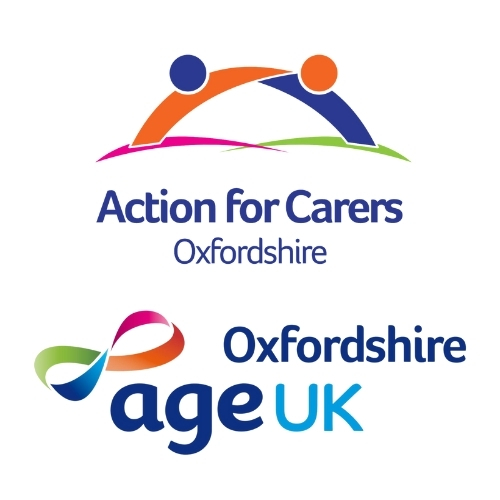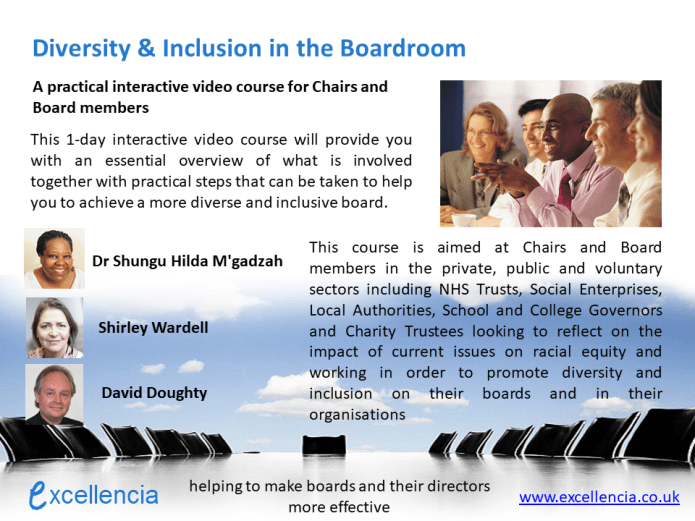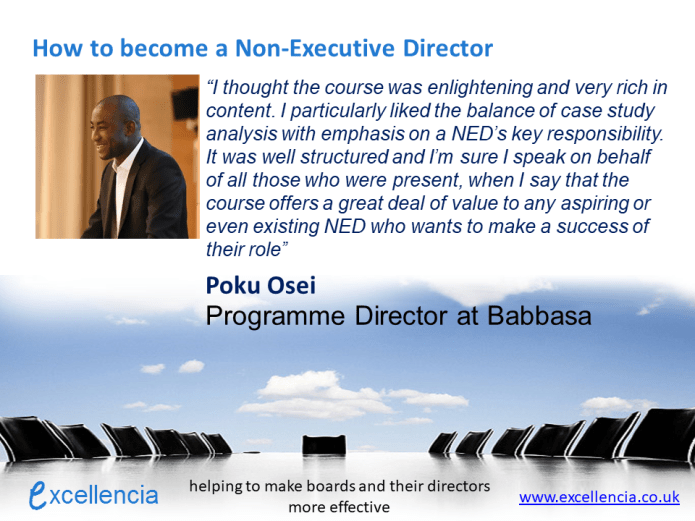Owning up to our Negative Automatic Thoughts: Are we becoming tired and numb to the messages around diversity equity and inclusion?
Sometimes it seems like some individuals and organisations have switched off from messages on racial justice and racial equity. However, the challenges facing us are no longer just about diversity, equality and inclusion, they are much greater than this. Psychologists recognise that if you experience something enough times you can become numb and supress your feelings and responses.
I believe this also applies to work in the area of diversity equity and inclusion. When we feel like we are being bombarded with information on the lack of racial tolerance and differences and being told that we have to change both at an individual and organisational level, there is a danger we can stop responding to these messages. Indeed we can become numb to the suffering of those who are different and to the efforts being made to promote change in this area. Our brains can filter out the information and we can switch off from this. But at what costs? Events in the USA warn us of the dangers of racism and intolerance of differences and what happens when our sense of privilege and entitlement is left unchecked.
Empathy and compassion and fearing for the lives of others.
I woke yesterday morning to the news of the death of Police Officer Sicknick. I like many others had watched officers battling to maintain control of Capitol Hill against a mob who had invaded the building demanding that the USA election outcome be overturned. One particular video which caught my attention was of a black police officer trying to hold off the mob of protesters terrified for his life.
As I watched this black officer running away from the mob and then at times standing his ground and then having no option but to flee as he was outnumbered, my heart was in my mouth and I empathised for this black man and wondered why he was on his own. Where were his fellow officers? How must he be feeling in that moment?
As a black woman it was not difficult for me to empathise with him and to understand the fear and terror he must have been feeling as he was standing face-to-face with this mob who were most likely right wing extremists and intolerant of racial differences.
It reminded me of the film Roots which I had watched when I was very young which still gives me nightmares to this day when I remember scenes of black people being isolated, trapped and lynched. We talk about post-traumatic stress disorder and psychological trauma but no one can begin to understand the trauma that these two policemen would have suffered in those moments. Black or white they were Officers doing their job and being attacked in the process.
An attack on democratic values and way of life?
Watching CNN following the riots and attacks on Capitol Hill there was a discussion on how worried we should be and someone reflected that what’s at stake is our democratic way of life and our liberal values. They talked of the dangers posed by the right wing extremists who having defined the world in a certain way are outraged that people do not agree with their definitions.
“They want to deny everyone else their rights and those at the most risk are the marginalised groups or ethnic minorities.”
If we needed further proof, the work in the area of anti- racism has never been more urgent. Racism and intolerance impact on society; fear, anger and blame feed the monster. Diversity and Inclusion does not just relate to organisations and boards it affects us all and we need to realise what the risks are if we continue to dismiss the need for change in this area as not applying to us.
When we allow ourselves to be stuck in caves of privilege, safe from the injustice which affects marginalised groups we convince ourselves that Diversity and Inclusion is not our business. However if we do this long enough the damaging impacts are clear to see as we nurture and reinforce messages of superiority and entitlement. We nurture and reinforce messages of intolerance and believe the conspiracy theories we are told. The impact of these repeated messages affects us all (not just those who believe them) as we saw in the Capitol Hill riots.
Some will argue this was in America, it cannot happen here. However the truth is it can happen anywhere. Wherever senses of privilege and entitlement are left unchecked and where there is intolerance of difference and an eagerness to blame those who are different such as ethnic minorities.
Why our focus needs to be on more than just about diversity, equity and inclusion.
Yesterday I met with David Doughty and Shirley Wardell to plan the diversity and inclusion in the boardroom course which we are holding later this month. We had a long discussion around what makes an effective board. We explored the areas we hope to cover on the training programme including concepts such as creating a safe space, building bridges of empathy, coming out of caves of privilege and promoting diversity of thought.
Concerns have been raised around unconscious bias training and whether this really has an impact on changing beliefs and behaviours. Some MPs have argued against such training, protesting against being told what to think. I recognise that some people are numb to anti-racism training and that some consider training not to be the solution in promoting change in boardroom behaviours.
It became clear to me during our planning that after months of conversations around racial injustice there is a real danger the course can fail to catch people’s attention and its messages lost. It’s therefore important to really highlight why diversity, equality and inclusion is such a key focus which we all need to make our business and not turn away from.
Why should Board members make this course their business?
So let me take time to explain why this course is critical to the work that Boards need to start doing in promoting greater inclusivity. Whilst the focus of the training program is on diversity and inclusion in the boardroom what we are going to be covering is much more than this.
It offers board members the first steps in exploring the function of their board and in evaluating where they are in their efforts to foster change and promote greater inclusivity. However more than this, it provides support and challenge in exploring Board values, beliefs and behaviours in relation to racial differences.
We all know that racism is really about power and that if true change is to occur it needs to be at the structural and institutional levels. This is why working with Board members is critical to this work.
In the UK, the Charity commission has recently published the updated Charity Governance Code which includes revised recommendations on Equality Diversity & Inclusion (EDI) and Ethics –essential reading for all charity Chairs and Trustees. This further highlights the importance of work in this area.
So what does it take and what are the costs if we fail to do this work and achieve change?
With all the conversations and protests following the murder of George Floyd and now the attacks on Capitol Hill, some say this is a time for healing, however before the healing can begin, we have to do the work and this includes building bridges of empathy. We need to be able to put ourselves in someone else’s shoes like officer Sicknick’s shoes or the black police officer and imagine how they must have been feeling in those desperate moments as they tried to hold off the rioters.
We need to be able to talk honestly about trust and how we build trust in each other and across different racial groups. How can I be sure that my colleagues will support me and that they will have my back? Those are questions many who have experienced racism in the workplace have asked themselves.
It is only when we practise building bridges of empathy and promote an understanding of what it’s like for someone who is different that the healing can begin. We also need to be able to reflect on our negative automatic thoughts. We all have them and it is important to recognise these and consider their impact.
Posturing and position statements will not achieve the change required.
Currently, in some organisations there is a lot of posturing and pretending when actually the empathy and trust is not there. People and organisations put out position statements saying “racism has no place in our society” when their very practice is one of racism and intolerance of differences.
We need to be open and transparent and start talking about the failure of some organisations. We need to start naming and shaming organisations and celebrating those organisations and individuals who are doing the right things.
We need to stop posturing and pretending and playing at saying the right things. We actually need to start taking action and thinking about what we are doing.
Organisations need to recognise and accept that the work in the area of Equity, Diversity and Inclusion begins with honesty first and foremost and an acknowledgement of the complexities of racism. We need to put our hands up and admit when we've got it wrong. We need to admit our negative automatic thoughts and challenge ourselves and others to control these.
Commitment to change starts in the Boardroom with senior leaders having conversations.
There has to be a real commitment at the individual and organisational level if things are going to change and if we are to achieve true racial equity and racial justice.
This commitment has to start with conversations on race and speaking up and talking honestly about our experiences of differences whether we are black or white. This involves an understanding of emotional intelligence and an ability to explore the principles of empathy, compassion and belonging. Senior leaders need to find ways of building bridges of empathy, bringing different communities together, fostering belonging and shifting away from narratives of blame and racial intolerance.
However that is only the first step. The real work in achieving change starts after that!
The Diversity and Inclusion in the Boardroom course offers that first step in raising awareness and beginning the first step of the journey to admitting to ourselves that we haven’t always got it right and we need to do things differently. We need to challenge racial intolerance and prejudices. If we fail to act now scenes like the storming of Capitol Hill will become common place as we continue to create a society which is intolerant of difference, a society where ordinary families are radicalised and join with extremist groups who feel entitled by the colour of their skin and will stop at nothing to snatch power away from others.
As part of this training you will have the opportunity to complete the Six Stages Questionnaire which is a support and challenge developmental tool designed to promote an understanding and ability to deal with racism.
By Dr Shungu Hilda M’gadzah
Psychologist, Diversity, Equity and Inclusion Consultant.
Inclusion Psychologists Limited
Six Stages Framework.
 Helpful and fulsome in opening up the channel of Non-Executive Director as a career path. I know considerably more about what is required and expected now and, of real practical benefit, how to go about seeking and finding a rewarding role as an NED. Highly recommended.
Helpful and fulsome in opening up the channel of Non-Executive Director as a career path. I know considerably more about what is required and expected now and, of real practical benefit, how to go about seeking and finding a rewarding role as an NED. Highly recommended. I had the pleasure of attending '
I had the pleasure of attending ' I recently attended Excellencia's NED course written and run by the highly experienced David Doughty. In one day you cover an enormous amount of ground where the topics include, Governance, Risk, Information, Due Diligence, Solvency, NED role including required skills, duties and liabilities and finally how to win a position. I recommend it highly.
I recently attended Excellencia's NED course written and run by the highly experienced David Doughty. In one day you cover an enormous amount of ground where the topics include, Governance, Risk, Information, Due Diligence, Solvency, NED role including required skills, duties and liabilities and finally how to win a position. I recommend it highly. A really useful day for anyone with serious intentions of becoming a NED. The event was well structured with a good balance between the theory of corporate governance and NED responsibilities as well as allowing plenty of time for sharing experiences through group interaction
A really useful day for anyone with serious intentions of becoming a NED. The event was well structured with a good balance between the theory of corporate governance and NED responsibilities as well as allowing plenty of time for sharing experiences through group interaction I found the
I found the  I found the course very helpful, as I wanted to understand in detail what a NED role entailed. I felt that I gained enough information not only to decide if this was the sort of role that I would be interested in, but also to be able to function in such a role. The guidance on seeking appointments was an added bonus. It was also an interesting day with a varied group of delegates and I would happily recommend it.
I found the course very helpful, as I wanted to understand in detail what a NED role entailed. I felt that I gained enough information not only to decide if this was the sort of role that I would be interested in, but also to be able to function in such a role. The guidance on seeking appointments was an added bonus. It was also an interesting day with a varied group of delegates and I would happily recommend it. interesting seminar on
interesting seminar on  David is a solid expert. The overview of the role of a NED was very well presented. Highly recommended.
David is a solid expert. The overview of the role of a NED was very well presented. Highly recommended. Knowledgeable presenter Good solid coverage of core financial concepts - P&L, balance sheet, ratios
Knowledgeable presenter Good solid coverage of core financial concepts - P&L, balance sheet, ratios An invaluable course for anyone looking for NED roles. Expertly delivered, honest and action focussed. Extremely useful materials. Feel much better equipped for to pursue opportunities as a NED.
An invaluable course for anyone looking for NED roles. Expertly delivered, honest and action focussed. Extremely useful materials. Feel much better equipped for to pursue opportunities as a NED. Having attended this course in the last few months I can confirm its value. Having held NED roles in my favoured area of engineering and manufacturing David opens the mind to the potential of other sectors and using ones transferable skills. Have set a strategy for personnel growth as NED – if I could just stop getting interim assignments
Having attended this course in the last few months I can confirm its value. Having held NED roles in my favoured area of engineering and manufacturing David opens the mind to the potential of other sectors and using ones transferable skills. Have set a strategy for personnel growth as NED – if I could just stop getting interim assignments Right from the start of the
Right from the start of the  The course was well constructed and delivered by David who has extensive knowledge of a range of boards, their structure and governance. It was particularly helpful to me as I am new to applying for NED roles and the guidance made me totally rethink what is required from the application process – i.e. this is not an operational role! The delegate group was of a suitable size to allow for interaction and sharing of ideas and experience
The course was well constructed and delivered by David who has extensive knowledge of a range of boards, their structure and governance. It was particularly helpful to me as I am new to applying for NED roles and the guidance made me totally rethink what is required from the application process – i.e. this is not an operational role! The delegate group was of a suitable size to allow for interaction and sharing of ideas and experience I recently attended David's one day introduction
I recently attended David's one day introduction  I found the day stimulating and informative. It confirmed many of the areas I was aware of working with a Board as a Company Secretary and refreshed my knowledge on some of the legal aspects of the role
I found the day stimulating and informative. It confirmed many of the areas I was aware of working with a Board as a Company Secretary and refreshed my knowledge on some of the legal aspects of the role I can thoroughly recommend this course and David. As well as meeting interesting colleagues, a great way to understand compliance, personal capabilities and skills needed to fulfil a NED role. A helpful and well structured intro into the NED world.
I can thoroughly recommend this course and David. As well as meeting interesting colleagues, a great way to understand compliance, personal capabilities and skills needed to fulfil a NED role. A helpful and well structured intro into the NED world. I found the
I found the  I did the course in Bristol, in January on a chilly day. I received a warm welcome however and David brought the subject matter to life, made it practical, and tailored it to our specific objectives. The course structure made sense, we had enjoyable discussions, and the other people on the course (as usual with such things) were a good resource too. I can recommend it fully to anyone considering it. You'll be in capable and experienced hands.
I did the course in Bristol, in January on a chilly day. I received a warm welcome however and David brought the subject matter to life, made it practical, and tailored it to our specific objectives. The course structure made sense, we had enjoyable discussions, and the other people on the course (as usual with such things) were a good resource too. I can recommend it fully to anyone considering it. You'll be in capable and experienced hands. Unlike many courses I have attended in the past,
Unlike many courses I have attended in the past,  Having attended one of David's
Having attended one of David's  Well worth the time! Duncan has packed a lot of information into the course, which reminded me of all the things I should be thinking about, and doing something about in my own business, and also sent me away with some action items. Highly recommended!
Well worth the time! Duncan has packed a lot of information into the course, which reminded me of all the things I should be thinking about, and doing something about in my own business, and also sent me away with some action items. Highly recommended! John delivered a thought provoking and insightful workshop. Ideal for Non-Executive Directors aspiring to fully understand sales and how to create strategic commercial value at board level
John delivered a thought provoking and insightful workshop. Ideal for Non-Executive Directors aspiring to fully understand sales and how to create strategic commercial value at board level I recently attended the Excellencia one-day course on
I recently attended the Excellencia one-day course on  A great introduction to the world of NEDs; well-structured and expertly delivered.
A great introduction to the world of NEDs; well-structured and expertly delivered. David's
David's  I had the pleasure of attending a recent
I had the pleasure of attending a recent  I attended the 19th July course in Bristol and found it to be very informative. Not only was there a wealth of technical information provided but there were numerous case studies - based on real incidents - which were really thought provoking.I would happily recommend this course to anybody who is considering taking up the challenge of being a Non-Executive Director
I attended the 19th July course in Bristol and found it to be very informative. Not only was there a wealth of technical information provided but there were numerous case studies - based on real incidents - which were really thought provoking.I would happily recommend this course to anybody who is considering taking up the challenge of being a Non-Executive Director As an introduction to the world of NED's this course is well structured to give an honest and practical insight in to how to identify and prepare for a move in this direction. Money well spent!
As an introduction to the world of NED's this course is well structured to give an honest and practical insight in to how to identify and prepare for a move in this direction. Money well spent! An excellent course giving a clear picture of the role, the skills and characteristics required, the range of NED opportunities and the various routes to secure such positions. Particularly helpful focus on shaping your CV for this sector and the key skills required. As a bonus you also meet interesting people and useful contacts. A good career investment which will hopefully deliver quick, positive results.
An excellent course giving a clear picture of the role, the skills and characteristics required, the range of NED opportunities and the various routes to secure such positions. Particularly helpful focus on shaping your CV for this sector and the key skills required. As a bonus you also meet interesting people and useful contacts. A good career investment which will hopefully deliver quick, positive results. I found this very useful , John really knew his stuff and made this engaging and materials were spot on and good interaction with other members on the course which added to the skill sharing- I learned a lot.
I found this very useful , John really knew his stuff and made this engaging and materials were spot on and good interaction with other members on the course which added to the skill sharing- I learned a lot. This course is a must for any aspiring NED and even established NED's as a refresher. The content and its delivery were well paced, informative and challenging in equal measures, led by a seasoned expert whose capabilities provide a wealth of knowledge to be drawn upon. Incredible value for money and should be part of a suite of courses leading to a more formal qualification for aspiring NEDs. 100% recommended, you will not be disappointed.
This course is a must for any aspiring NED and even established NED's as a refresher. The content and its delivery were well paced, informative and challenging in equal measures, led by a seasoned expert whose capabilities provide a wealth of knowledge to be drawn upon. Incredible value for money and should be part of a suite of courses leading to a more formal qualification for aspiring NEDs. 100% recommended, you will not be disappointed. The material, the course leader’s insights, and the opportunity to share thoughts and feelings with similarly inclined business people, made for a really valuable day. I came away with some clear actions.
The material, the course leader’s insights, and the opportunity to share thoughts and feelings with similarly inclined business people, made for a really valuable day. I came away with some clear actions. I can thoroughly recommend this very well structured and informative course. It provides an excellent introduction to the remit, capabilities and attributes of NEDs.
I can thoroughly recommend this very well structured and informative course. It provides an excellent introduction to the remit, capabilities and attributes of NEDs. is an essential introduction for those who seriously wish to pursue Non Executive Director Roles. The course, led by David Doughty an experienced and knowledgeable NED, is focused on the key information required to achieve your first position. It includes a discussion of the Non Executive Director Role, duties and liabilities, the relevant skill set and valid approaches to securing a NED position. The day includes case study work as well as interactive discussions of the course material. I thoroughly recommend this course which is good value for money.
is an essential introduction for those who seriously wish to pursue Non Executive Director Roles. The course, led by David Doughty an experienced and knowledgeable NED, is focused on the key information required to achieve your first position. It includes a discussion of the Non Executive Director Role, duties and liabilities, the relevant skill set and valid approaches to securing a NED position. The day includes case study work as well as interactive discussions of the course material. I thoroughly recommend this course which is good value for money. A well structured and presented introduction to the responsibilities, challenges and attributes required of being a NED. It was thought-provoking. I have referred back to my copious comments in the comprehensive slide hand outs many times already
A well structured and presented introduction to the responsibilities, challenges and attributes required of being a NED. It was thought-provoking. I have referred back to my copious comments in the comprehensive slide hand outs many times already





















You must be logged in to post a comment.